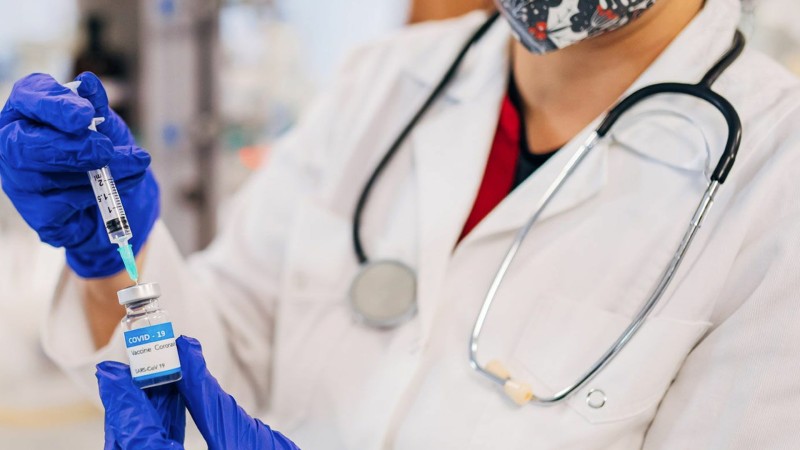State and local healthcare organizations are facing multiple challenges in getting COVID-19 vaccines to communities. Andy Martin, group vice president at TTEC, shares insights and best practices that he and his team have gathered from their work helping public and private sector health organizations address those very challenges as the vaccine rollout continues.
Key takeaways:
- A lack of communication, overwhelming call volume, and fragmented reporting are among the challenges that state and local health officials say are slowing down the vaccine rollout.
- State and local health departments are adopting new technologies, such as SMS messaging, to alleviate call volumes and proactively reach out to communities, delivering a better citizen experience.
- It is unlikely that COVID-19 will be eliminated any time soon and government organizations are beginning to take a long-term approach to supporting the vaccine distribution.
Transcript:
Judith Aquino: Hi, welcome to the CX Pod. I'm Judith Aquino. Today, we'll be talking about strategies for solving the issues that state healthcare organizations are facing in getting the COVID-19 vaccines to constituents and what they should be planning for next. Joining me in this discussion is my colleague, Andy Martin. Andy is a customer experience expert and group Vice President at TTEC, who along with his team is working with government and public sector organizations on solving many of the challenges associated with the vaccine rollout. Welcome to the show, Andy.
Andy Martin: Judith thank you. It's great to be here. It's an honor to talk about CX best practices around COVID-19. It's a topic that's certainly getting a lot of attention these days and not always the positive kind of attention that we would hope for. But it's great to be with you Judith. And thanks for having me today.
JA: Right. And so, we know that for many people just signing up for a vaccine appointment is a confusing and frustrating process. What are you hearing from health officials in terms of the key challenges that they're facing in getting the vaccine out?
AM: Yeah, that's a great question. I think we're seeing some consistency across the board at both the state and the local level. Each state of course, is handling the process a little bit differently, but I’d say there are three main things that they're facing in terms of challenges. One of them is around just the communication. And you mentioned that upfront. How are we communicating with the citizens?
The other is increased call volumes, unexpectedly high call volumes into these states and local health officials that frankly, they just weren't prepared for. So large call volumes are a big piece of this. And the last one is struggling to report accurately, whether that is vaccination supply or what's going on with the scheduling, that's a challenge for these. And I can go into a little bit of detail on each. As you think about communication plan, many states, state governments who received the vaccine simply sent those vaccines out to what we call points of distribution.
Those could be pharmacies, that could be local health communities, that could be hospital systems, but those points of distribution were responsible then to communicate with their respective constituents on how, when, what's the availability, et cetera. And what we found was there was really not a centralized approach from the states to really manage the expectations of the citizens. And I think that lack of a communication plan, a structured communication plan can really create a challenge for some of the local state and local health officials.
The other one thing that I mentioned was increased call volumes. And just to give you a sense, probably about four weeks ago now we worked with a point of distribution within the State of Texas for example, that happened to be a pharmacy in this case. But that pharmacy who had folks answering the phones that were actual pharmacists, the phone was ringing off the hook to the tune of roughly 22,000 calls a day that were coming in.
And they just didn't expect that kind of call volume and it created some real challenges to them. So I think anticipating that this is an unprecedented event and that you will be receiving much higher call volumes than you might expect, with questions about efficacy, questions about availability, those will happen and you have to anticipate that.
And the last one was accurate reporting, and that is a centralized registration and scheduling system in many, many cases in most states. In fact, they've left that up to the points of distribution to create those registrations. And as a result, they've delegated that out and there's limited visibility at the states and even at the local health community level on how to report accurately, whether that's again about availability, or about schedules, about who’s been vaccinated and who hasn't. And that becomes really, really important to get, when you're using myriad systems to try and get consistent information and data, it can be a real challenge.
JA: So what I'm hearing from you is it sounds like for a lot of these states, being able to quickly get the resources that they need I mean, that seems to be at the forefront of some of their problems. So what best practices have you found in terms of how can states quickly get the help that they need?
AM: Yeah, I think that's kind, that's a great question. I think you're right. That speed to help is really, really important. So how do you address the community's needs and answer their questions in an effective and efficient way as quickly as possible. And so I think there's a couple of key things that we've learned, number one, I think taking a centralized approach to communication that we talked about, and a centralized approach to vaccination management. That doesn't mean that you can't delegate, it just means that you need a consistent system, that can provide consistent data and information. And you do that through centralizing the scheduling tool. There's lots of different options out there, TTEC works with several partners that can bring that to the table.
And then I think also the preparation, so prepare and expect that you're going to have large call volumes and expect that you're not going to know how to predict that call volume and when it's going to be here. So for us, from a TTEC perspective, we provide contact center capability. We bring a combination of human element and the technology element to tackle a problem like unpredictable call volume. So technology like messaging with your clients, with your constituents, with the citizens proactively to inform them can prevent a problem with massive call volume. So the use of technology is really key and we're seeing that help in terms of speed to help as we like to call it.
JA: And so among the solutions that you've been helping states with, which ones are relatively new to them? What innovations are they starting to adopt that they maybe wouldn't have before?
AM: Yeah, I think that's key to regaining, as you think about trust in the system. A lot of people I think are challenged in that department now because of the confusion. And so they're open to looking at and exploring new ways to solve these problems. And so I mentioned messaging before and I bring that up because it's not something that the people typically look at. It's if the phones are ringing in at our local health department, it's getting more people to answer the phones.
And what we're finding is that bringing technology like a messaging capability. So think about SMS messaging capability that is secure, that's accessible, that can address questions, but proactively reach out to the community as well. And I think what we're finding is that improved communication, the efficiency, the ability to basically answer people's questions through a technology channel when they opt in.
Now we know that not everybody is going to have technology to do that, but it can handle a large portion of the population and more than you might anticipate. And so I think adoption of technology like messaging capability is really, really important and helping, and I don't think a lot of people think about that when they think about the COVID-19 vaccination problem, and using technology to balance the phone answering that must take place, because there's always going to be a human element to this. But coupling that with messaging really takes some sting out of the system and it also improves the citizen experience.
JA: And so speaking of the human element, what advice do you have in terms of, if, since we're talking about reaching out to a population with varying levels of tech savviness, how do you coordinate communications over messaging with maybe groups of people who would prefer live voice support?
AM: Exactly. Kind of the ear-to-ear model. We're finding that that's certainly in the older population, we see that that is definitely a desire there. And I think we need to expect that, we need to support that, we need to support all channels. And what we're finding is that there is a need for empathy. There's a human element to this. People are scared, they're confused. There's an education component to this as well, where people are concerned about efficacy. So sometimes it's not even the proclivity to use technology as much as it is I want to talk to another human about a real concern that I have.
Maybe you're an expectant mother who wants to understand how the vaccination may impact your pregnancy. Those are very serious questions that people typically want to talk to a person, right. And so that human element, the ability to provide empathetic response to citizens in what can be a very scary time for a lot of people, is really, really important. And we don't see that going away, but we do see the opportunity to balance that with the technology side that can handle both. So you really need to be prepared for both, but never underestimate the importance of that human interaction.
JA: And so in your conversations with clients, are they thinking in terms of using this as a short term solution, or are they already planning for having to vaccinate people again a year from now?
AM: Yeah, that's interesting because it is, let's face it, our health officials and us as a nation actually are facing something that's unprecedented. We haven't experienced it before. It's hard to anticipate what to expect. But what we are seeing is states now and local governments taking a longer-term approach to this and realizing that this vaccination challenge is not going to be going away very soon. And so taking a longer-term approach helps you think about things differently. And so we are seeing that, that they're starting to take a longer-term look at how do we solve this problem and that changes your perspective on how you might handle it.
If it was very short-term you might just say, "Hey, look we can just put additional people on the phone?" But as you start thinking about this on a longer term, sustainable, how do I sustain this, how do I become more efficient and effective? As you start thinking longer term, which we think is the right approach based on what we're seeing, it is looking at a broader solution set to attack this problem that makes sense in the long term, both financially, from a fiscal responsibility standpoint, as well as citizen response standpoint.
JA: Well, Andy, thanks so much for the info.
AM: Judith, it's an honor to talk to you and thank you very much for having me today.
Judith: To learn more about our vaccine series, visit us at ttec.com or subscribe to our podcast at ttec.com/resources/cxpod. Thanks. See you next time.














